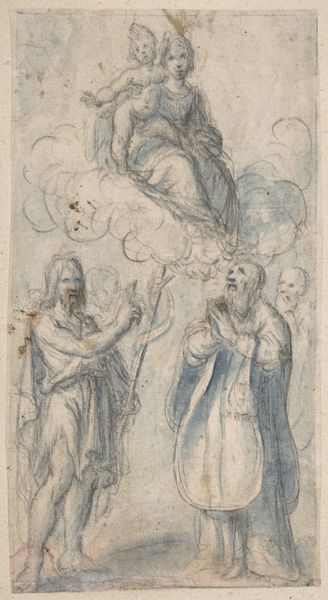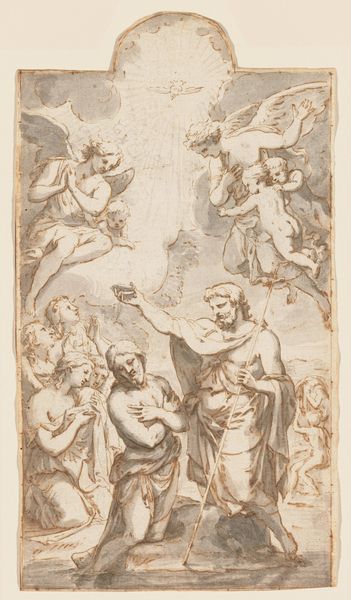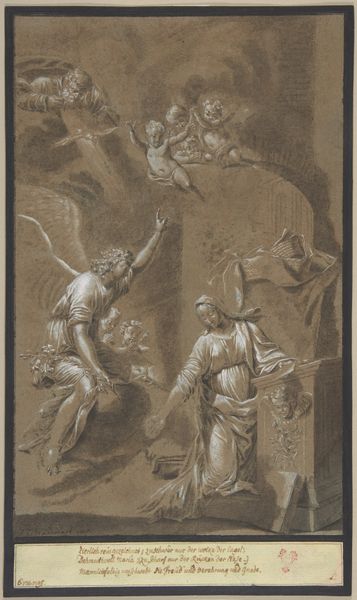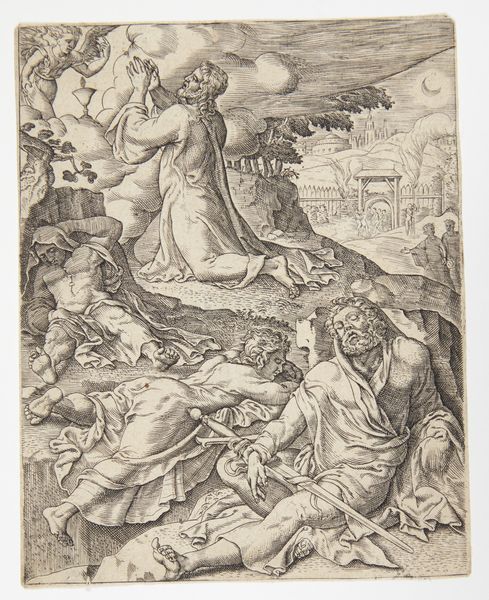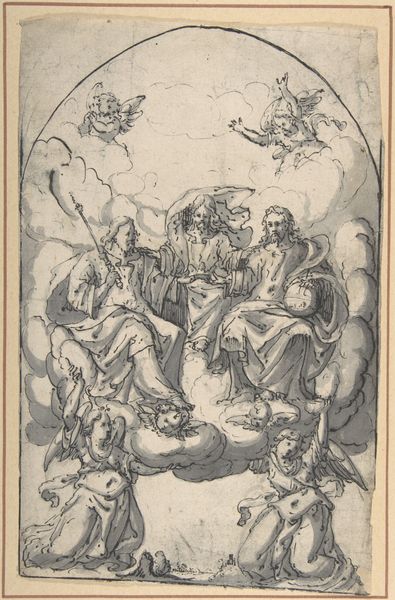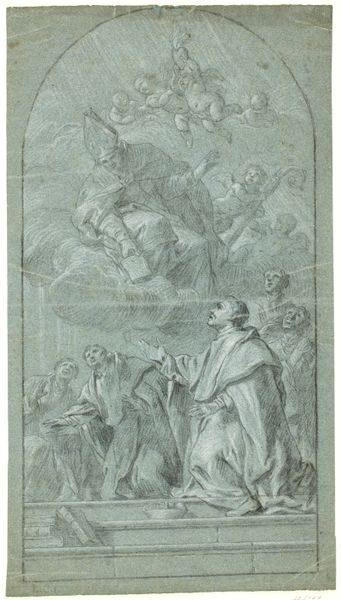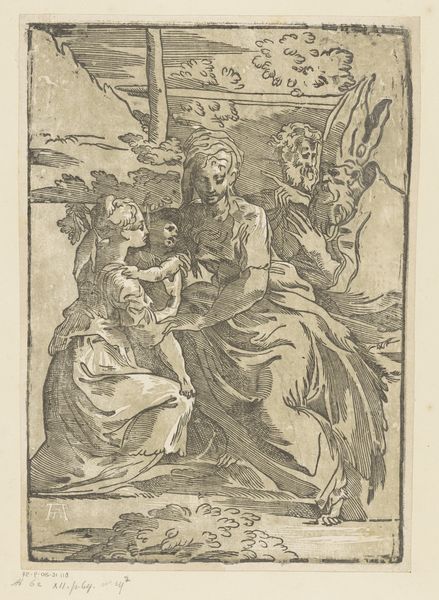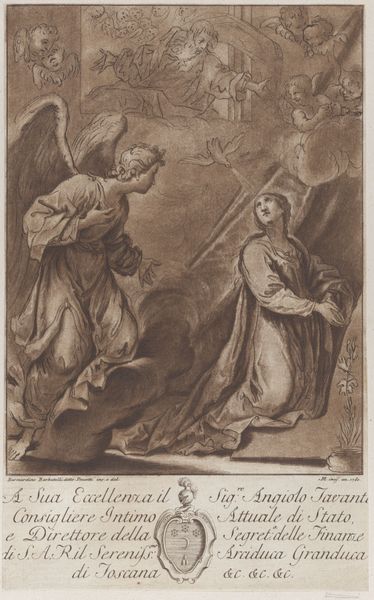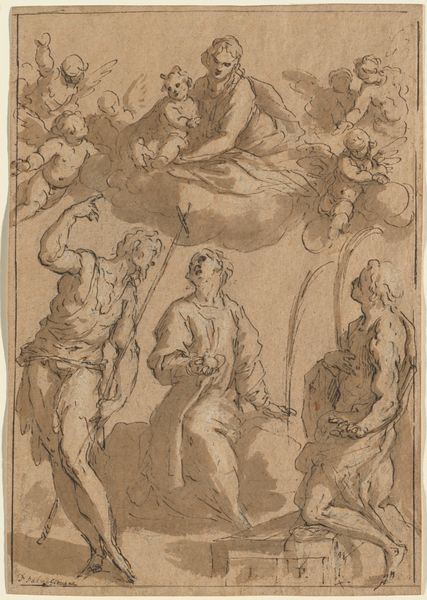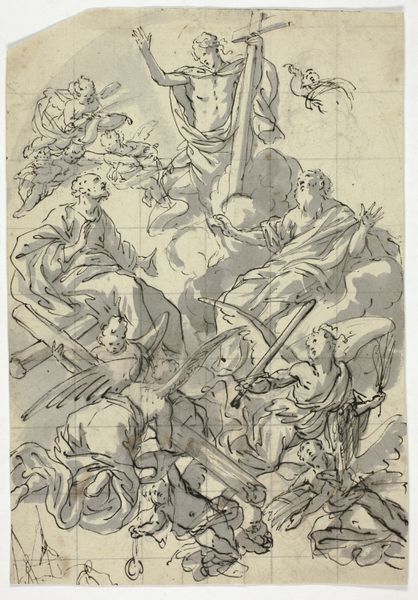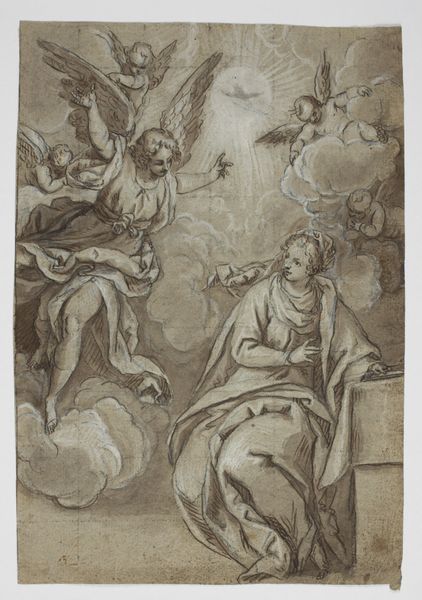
A Male and a Female Saint (Joseph of Aramathea? and Saint Catherine of Siena? Adoring the Virgin and Child in Glory (recto); Minerva Bellona with a Victorious Warrior (verso) 1623 - 1690
0:00
0:00
drawing, print, ink, pen
#
portrait
#
drawing
#
baroque
# print
#
figuration
#
madonna
#
ink
#
child
#
pen-ink sketch
#
pen
#
history-painting
Dimensions: 12 3/8 x 8 7/16in. (31.4 x 21.4cm)
Copyright: Public Domain
Curator: Here we have a drawing attributed to Francesco di Maria, created sometime between 1623 and 1690. It’s a pen and ink sketch, double-sided, with a religious scene on one side and a mythological scene on the other. Editor: My immediate impression is of movement. The ink washes create a real sense of fluidity, particularly around the Virgin and Child. Curator: Exactly! Di Maria really captures the dynamism characteristic of the Baroque period. The recto side presents a fairly conventional grouping—a Madonna and Child adored by saints, perhaps Joseph of Arimathea and Saint Catherine of Siena—hovering amidst cherubic figures. Editor: It’s the verso that grabs my attention, frankly. A warrior alongside Minerva Bellona suggests something about the socio-political currents. Was this meant to perhaps depict a call for justice, power, or maybe it shows the role that classic allegories continued to play at the time, even when reinterpreted during the Baroque? Curator: Interesting. Notice, though, how the composition is echoed across both sides. The grouping of figures remains the primary focus, even with the shift in subject matter. Consider the artist's control over line and tone; it speaks volumes about the evolution of drawing as a distinct art form. He very intentionally plays with tonal contrast. Editor: I can see your point. I guess I can’t help but bring it back to the institutions which ultimately shape how pieces like this survive. That the work landed at The Met is a testament to its perceived importance over time—it continues a dialogue and generates questions, obviously. What stories have these drawings told, and for whom? Curator: It’s in pieces like these that we trace formal evolution through nuanced transitions—from compositional structure to stylistic choices of the baroque era. Editor: A visual record, a moment captured—evidence of changing styles of devotion and maybe even the rise of European power—remarkably captured.
Comments
No comments
Be the first to comment and join the conversation on the ultimate creative platform.


